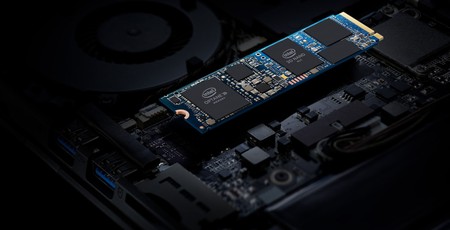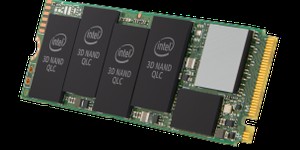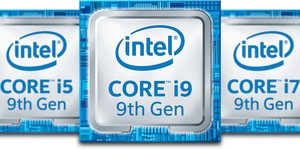
Intel has confirmed it is on-track to launch the Optane H10 solid-state drive (SSD), which combines its Optane and QLC NAND flash memory on a single M.2 stick, this quarter - though is still reluctant to discuss pricing.
Developed in partnership with Micron in a since-dissolved joint venture and first unveiled back in 2015 as 3D XPoint, Intel's Optane is a high-speed non-volatile memory designed to one day replace both NAND flash and dynamic RAM (DRAM). The company's quad-level cell (QLC) NAND flash, meanwhile, offers considerably boosted capacities but at a performance cost. While both technologies have been seen separately before - in, among others, the Intel SSD 660p family and the Optane SSD 900P, the two are distinctly complementary - making it entirely unsurprising when Intel announced it would be marrying the two on a single device in January this year.
The Intel Optane H10 family, the company confirmed, would pair up to 32GB of high-speed Optane with up to 1TB of QLC NAND flash, effectively replicating the effect of pairing one of the company's QLC-based SSDs with an Optane caching device but taking up only a single slot. Now, Intel has announced that the drives will be hitting the market this quarter in devices from companies including, but not limited to, Acer, Asus, Dell, and HP, and at retail for those looking to upgrade an existing system or build their own.
Specifications released at the same time confirm the top-end 1TB model, which includes a 32GB Optane cache, offering up to 2,400MB/s sequential read and 1,800MB/s sequential write via a clever system which allows both the Optane and NAND flash controllers to operate simultaneously - albeit each being restricted to half of the four PCI Express lanes available on an NVMe M.2 slot. The same drive offers 330,000 input-output operations per second (IOPS) random read and 250,000 IOPS random write, draws under 13mW at idle and 5.8W while active, and offers a five-year warranty with a 300 terabytes written (TWB) endurance rating. The 512GB sees the performance drop slightly to 2,300MB/s read, 1,300MB/s write, 320,000 random read IOPS, and a 150TBW endurance rating; the entry-level 256GB version, meanwhile, is the weakest of the three with 1,450MB/s read, 650MB/s write, 230,000 random read and 150,000 random write IOPS, and a 75TWB endurance rating, but has the same five-year warranty as its faster stablemates.
Pricing for the retail launch of the drives has yet to be confirmed, but specifications are available for all three launch models on the official website.

MSI MPG Velox 100R Chassis Review
October 14 2021 | 15:04








Want to comment? Please log in.